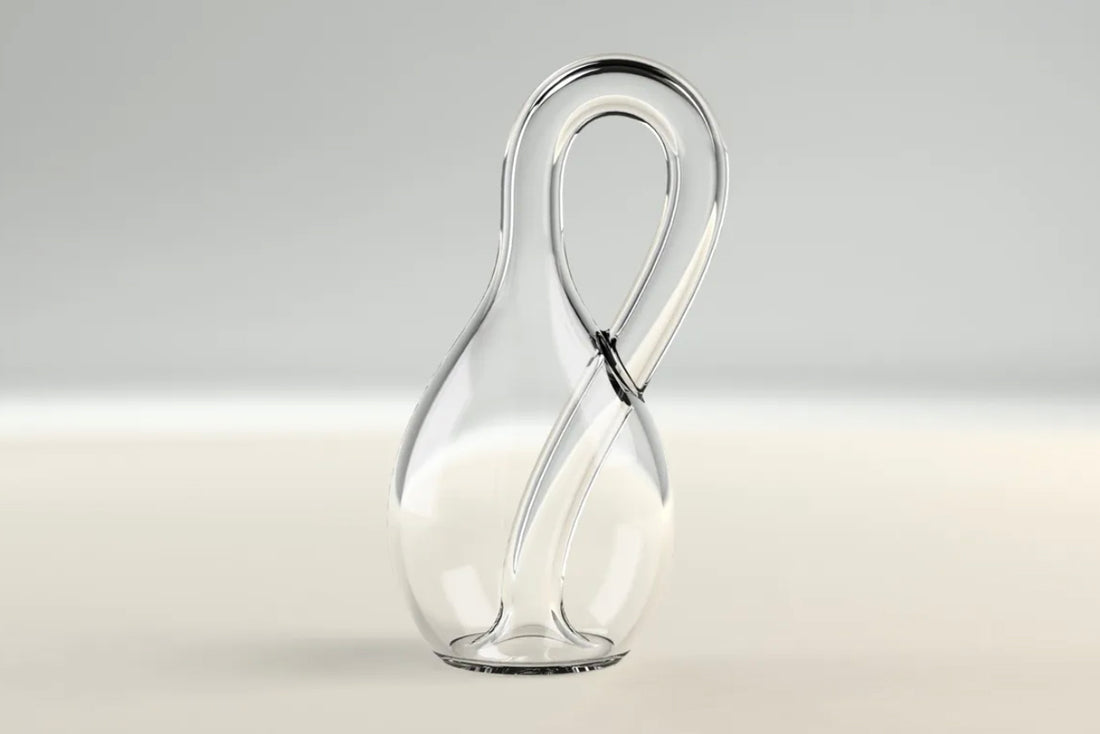In mathematics, the Klein bottle is an example of a non-orientable surface; that is, informally, a one-sided surface with no distinguishable "inside" or "outside”, which, if travelled upon by (say) an ant (or a human if the bottle was big enough), could be followed back to the point of origin while flipping the traveller upside down.
More formally, the Klein bottle is a two-dimensional manifold on which one cannot define a normal vector at each point that varies continuously over the whole manifold. Other related non-orientable surfaces include the Möbius strip [RR#1: 46]. While a Möbius strip is a surface with a boundary, a Klein bottle has no boundary.
The Klein bottle, first described in 1882 by the mathematician Felix Klein, can be thought of as a higher-dimensional analog of the Möbius strip, as described in the this limerick by Austrian-Canadian mathematician Leo Moser:
“A mathematician named Klein
Thought the Möbius band was divine.
Said he: "If you glue
The edges of two,
You'll get a weird bottle like mine."
To construct a Klein bottle, one typically begins with a rectangular strip of material. First, you would join the opposite edges of the rectangle to form a cylinder. Next, you need to join the two circular ends of the cylinder, but in a way that requires the surface to pass through itself. This self-intersection is what makes it impossible to fully realise a Klein bottle in three-dimensional space without some form of overlap.
In four-dimensional space, however, a Klein bottle can exist without self-intersection. In this higher dimension, the "bottle" can loop around itself seamlessly. This concept challenges our usual understanding of geometry and space, making the Klein bottle a popular object of topological study.
The Klein bottle finds application in various fields of science and engineering. In theoretical physics, it is sometimes used in discussions about higher-dimensional spaces and the properties of space-time. In computer graphics and 3D modelling, the Klein bottle serves as a challenging and interesting object to render, often used to test the limits of rendering software.
The Klein bottle is a captivating object that continues to intrigue mathematicians, scientists and enthusiasts alike; and, speaking of enthusiasts, no discussion about Klein bottles would be complete without mentioning Cliff Stoll, an American astronomer, author and teacher who sells an impressive range of blown glass Klein bottles via the Internet through his company Acme Klein Bottles. He stores his inventory in the crawlspace underneath his home in Oakland, California, and accesses it when needed with a homemade miniature robotic forklift. It’s crazy … but in a good way.
Stoll is a real life "Doc Brown" (Christopher Lloyd in Back to the Future, 1985) and a mathemapreneurial breath of fresh air. The YouTube channel Numberphile has featured him in a few videos. Watch them online.
Story Idea: Roman Giuffré
_____________________________
References
wikipedia.org/wiki/Klein_bottle
kleinbottle.com
Images
1. Klein bottle
2. Portrait of Felix Klein, circa 1897
3. A two-dimensional representation of the Klein bottle immersed in three-dimensional space. Credit: Tttrung.
4. Möbius Strip [RR#1: 46]
5. An ant walking on Klein's bottle can never be caught. Credit: Pixelwg/Jörg Bandmann.
6. Cliff Stoll at home in Oakland, California
7. Video: "Klein Bottles" Numberphile, 2015
8. Zoe Stoll models Klein bottle hat with Möbius scarf. A perfect gift for anyone with a zero-volume head. Available from Acme Klein Bottle.







































































































